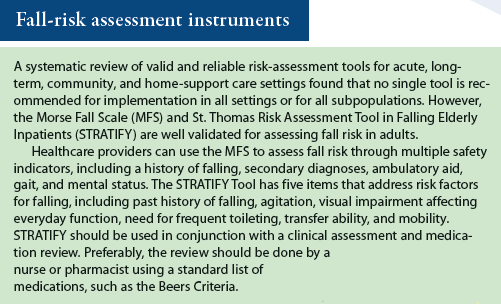The Only Guide for Dementia Fall Risk
The Main Principles Of Dementia Fall Risk
Table of ContentsThe 30-Second Trick For Dementia Fall RiskDementia Fall Risk - QuestionsDementia Fall Risk - QuestionsWhat Does Dementia Fall Risk Do?
A loss danger assessment checks to see just how most likely it is that you will certainly fall. It is mostly done for older grownups. The assessment generally includes: This consists of a collection of questions regarding your overall health and wellness and if you've had previous drops or troubles with equilibrium, standing, and/or walking. These tools check your toughness, equilibrium, and gait (the way you walk).STEADI consists of testing, evaluating, and intervention. Interventions are suggestions that might reduce your risk of falling. STEADI includes three steps: you for your risk of succumbing to your danger aspects that can be boosted to try to prevent drops (for example, equilibrium issues, impaired vision) to decrease your threat of falling by using effective approaches (for instance, giving education and resources), you may be asked a number of questions including: Have you dropped in the past year? Do you feel unsteady when standing or walking? Are you stressed over falling?, your company will certainly examine your stamina, equilibrium, and stride, making use of the following autumn analysis devices: This test checks your gait.
You'll rest down once again. Your provider will certainly check how much time it takes you to do this. If it takes you 12 secs or even more, it might indicate you are at greater threat for a loss. This examination checks strength and equilibrium. You'll sit in a chair with your arms went across over your upper body.
The positions will obtain more challenging as you go. Stand with your feet side-by-side. Relocate one foot halfway onward, so the instep is touching the big toe of your other foot. Move one foot totally in front of the other, so the toes are touching the heel of your other foot.
The Best Guide To Dementia Fall Risk
A lot of falls happen as an outcome of numerous adding aspects; consequently, taking care of the risk of dropping begins with recognizing the aspects that contribute to drop threat - Dementia Fall Risk. Some of the most relevant danger elements include: Background of previous fallsChronic medical conditionsAcute illnessImpaired stride and balance, lower extremity weaknessCognitive impairmentChanges in visionCertain high-risk medications and polypharmacyEnvironmental variables can also increase the threat for drops, consisting of: Insufficient lightingUneven or harmed flooringWet or slippery floorsMissing or damaged hand rails and get hold of barsDamaged or poorly fitted devices, such as beds, wheelchairs, or walkersImproper use of assistive devicesInadequate guidance of the individuals staying in the NF, consisting of those who show hostile behaviorsA successful loss danger administration program calls for an extensive medical assessment, with input from all members of the interdisciplinary team

The care strategy should additionally consist of interventions that are system-based, such as those that promote a secure atmosphere (appropriate lighting, handrails, order bars, etc). The effectiveness of the treatments must be evaluated periodically, navigate to these guys and the treatment strategy changed as required to show changes in the loss danger assessment. Applying a loss threat monitoring system using evidence-based ideal practice can reduce the prevalence of drops in the NF, while restricting the possibility for fall-related injuries.
Some Known Questions About Dementia Fall Risk.
The AGS/BGS guideline suggests screening all grownups aged 65 years and older for loss risk every year. This screening includes asking patients whether they have fallen 2 or even more times in the previous year or looked for clinical attention for an autumn, or, if they have actually not fallen, whether they really feel unstable when walking.
Individuals that have actually fallen once without injury must have their balance and gait examined; those with stride or balance problems ought to receive additional evaluation. A background of 1 loss without injury and without stride or equilibrium issues does not necessitate more evaluation past ongoing annual fall risk screening. Dementia Fall Risk. A fall risk analysis is called for as part of the Welcome to Medicare assessment

The 15-Second Trick For Dementia Fall Risk
Documenting a falls history is one of the top quality indications for fall prevention and administration. copyright medications in certain are independent forecasters of falls.
Postural hypotension can frequently be relieved by lowering the dose of blood pressurelowering drugs and/or quiting medicines that have orthostatic hypotension as a negative effects. Use of above-the-knee support tube and copulating the head of the bed raised may additionally reduce postural reductions in blood stress. The recommended components of a fall-focused physical exam are displayed in Box 1.

A Yank time higher than or equal to 12 Read Full Article secs suggests high autumn threat. Being not able to stand up from a chair of knee height without making use of one's arms indicates increased loss danger.